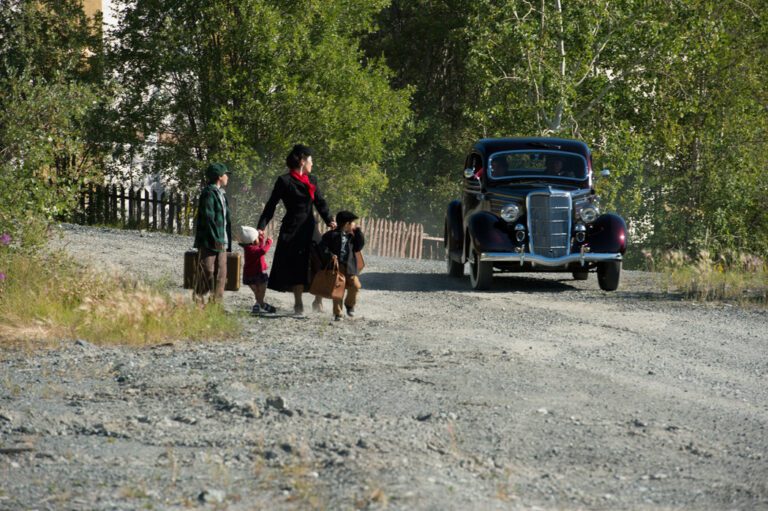On EDGE | ANALYSIS
What will the educational and employment reality of the NWT look like in 15 years? And what does it really look like today? These are questions tackled in a massive Conference Board of Canada report released last week.
The answers? Well, they’re complicated.
The Northwest Territories Labour Market Forecast and Needs Assessment was produced for the GNWT to inform their Skills 4 Success initiative, an attempt to overhaul the territory’s post-secondary education system set to move forward this fall.
The report’s marquee information has to do with the number of job openings — between 28,500 and 36,700, although the vast majority jobs are replacing current workers — expected in the next 15 years. To arrive at these projections and analyze their consequences, however, the report also deals with broad range of issues, from gender and ethnicity pay gaps, to low educational achievement, and projected population declines.
Of all the report’s takeaways, the most important seems to be this: the direction the territory’s economy is heading and the educational outcomes of its residents do not align.
Taken together, the data collected provide a strikingly comprehensive vision of the territory today and its future prospects. EDGE dug through the document; here are a few of the highlights.
The state of the economy: we’re in for a bumpy ride
Economic forecasts, buffeted by countless variables far beyond the NWT’s borders, always have to be taken with a grain of salt. Case in point: the report’s authors got duped by Snap Lake’s closure, which leaves a nice round $79-$91 million hole in their GDP projections, every year for the next 15 years.
Nonetheless, in order to hedge against just that volatility, the report outlines three economic scenarios.
The base scenario — call it realistic or conservative, depending on your inclination — sees the territory’s GDP grow by a healthy 4.5 percent annually until 2020, driven mainly by “an expected recovery in both metal and nonmetal mining,” and the opening of De Beers’ Gahcho Kué, Ekati’s Jay pipe, and the Prairie Creek mine.
After that, GDP is expected to contract by just 0.8 percent each year until 2025, due to the slowdown, then closure, of Diavik. From 2025 until 2030, there’s more bad news: “economic activity is set to contract by 1.8 percent annually. Diamond production is expected to see further declines during that period (if not earlier). Similarly, metal mining is projected to plummet as Prairie Creek reaches the end of its 10-year life.”
The more optimistic forecasts include things like NICO mine and Avalon’s Nechalacho Project opening. They also project a slower decline in oil production, increased exploration and the development of several government mega projects, like the Mackenzie Valley Highway. In these two scenarios, GDP grows at 5.8 and 6.2 percent respectively until 2020, and then, rather than declining as in the base scenario, continues a slow growth of 0.2 or 3.9 percent until 2025, and about two percent afterwards until 2030.
Whatever case comes to pass, the outlook is not particularly bright for the 2020s. This is largely because our economy remains driven by resource extraction, and the current lack of exploration in both the oil and gas and mining sectors means there won’t be projects large enough, or coming soon enough, to take up the slack left by the forthcoming closure of the diamond mines.
Educational gaps
Of all the report’s takeaways, the most important seems to be this: the direction the territory’s economy is heading and the educational outcomes of its residents do not align. Unless there is radical change to the education system, people from the NWT — especially Aboriginal people — will be left further behind.
Over the next 15 years, a forecasted 78 percent of all job openings will require some postsecondary education or extensive work experience and seniority. This number is striking when put next to statistics about educational achievement and attainment:
-
In 2014, the NWT’s high school graduation rate was 65 percent, with levels far lower outside of Yellowknife and the regional centres.
-
English language testing of Grade 3 students from 2007 to 2014 found “the proportion of students who have scored at or above the score set has been steadily decreasing for both non-Aboriginal (from 77 per cent to 57 per cent) and Aboriginal (from 41 to 33 per cent) students.”
-
By Grade 6, only 64 percent of non-Aboriginal students and 18 percent of Aboriginal students were hitting the competency threshold for English. Test scores for math were similarly low; “most notably, less than 10 percent of Grade 9 Aboriginal students outside of regional centres and Yellowknife performed at or above the set score during the time frame.”
-
For adults, 63.8 percent of the population has inadequate literacy skills and 70 percent has inadequate math skills. Broken down further, 82.4 percent of the Aboriginal population has inadequate literacy skills and 86.6 percent inadequate math skills.
Given these statistics, how can we possibly hope to employ people from the territory in an economy where nearly four out of every five jobs expected in the next 15 years require some postsecondary education? There are an expected 11,000 students who will move through the territory’s education system in the next 15 years. What jobs will they be able to get?
Unless educational attainment improves dramatically, the territory will increasingly (even more so than today) rely on workers coming up from the south to run the territory’s schools, clinics, businesses and bureaucracy, often to their own material benefit more than people actually from the north.
The gender and ethnicity gap
“Because it’s 2015,” may be a nice flourish of oratory courtesy of our new Prime Minister, but equality in the NWT, along both racial and gender lines, seems to be a long way off. This is especially true when it comes to a gap in earnings between similarly educated men and women, and Aboriginals and non-Aboriginals.
The study found that for people with no certificate, high school diploma or degree, Aboriginal women earned $74.28 for every $100 that a non-Aboriginal male earned.
“The numbers are not much better for Aboriginal males and non-Aboriginal females, both of whom earned less than $86 for every $100 that a non-Aboriginal male earned,” the report states.
For those with a certificate or diploma, the gap was only slightly less pronounced: for every $100 that a non-Aboriginal man earned, a non-Aboriginal woman earned $76.79 and an Aboriginal woman earned $76.09. And again, “Aboriginal males earned roughly $92.26 for every $100 that a non-Aboriginal male with the same qualification earned.”
You can see similar gaps by simply looking at GNWT management. Although the GNWT has improved its gender balance among managers — going from 75 percent of managers being men to near parity — things are still out of whack, as women make up around two-thirds of the GNWT workforce.
As the report notes, “The hierarchical division of labour between males and females in the NWT economy suggests there is potential to develop more professional and management training programs tailored to the needs and outlooks of females — both Aboriginal and non-Aboriginal. In this regard the GNWT, a top employer in the territory, has an opportunity to lead by example.”
Adding 2,000 people? Not likely
In 2014, the GNWT announced its intention to grow the territory’s population by 2,000 by 2019, and has been spending generously to make it so. Based on the report’s analysis, however, hitting this number seems unlikely.
In the base case forecast, “the NWT’s population is expected to moderately contract from 43,600 in 2014 to 42,900 in 2019…The population is then forecast to increase slowly over the following decade, with 200 fewer people living in the territory in 2030 than in 2014.”
When it comes to population aging, the report is blunt: the NWT “has serious demographic forces to contend with.”
The NWT population does have a high natural growth rate: in 2011 the fertility rate was 1.97 children per woman, compared to the national average of 1.6 children per woman. Yet natural growth is whittled away by outward migration.
“In 2020, net interprovincial migration is forecast to account for 1,827 people moving into the NWT from other provinces and territories, while 2,310 people are expected to move away.”
The report does note, however, that population growth could be greater if the medium or high growth scenarios come to pass. But it does not give a forecast, only saying, “better job prospects in the medium and high scenarios…will curb out-migration to other parts of the country and attract more migrants from other provinces and territories.”
We’re getting old
When it comes to population aging, the report is blunt: the NWT “has serious demographic forces to contend with.”
Right now the population’s territory is relatively young, with 32.9 being the median age in the territory compared to 40.4 for the rest of Canada. This is especially true amongst the Aboriginal population, where 40 percent of people are under the age of 24.
That said, the share of people aged 15 to 29 in the overall working-age population is forecast to decline from 30.6 percent to 26.6 percent of the population by 2030. At the same time, the percentage of the population over 65 is forecast to more than to double, from 6.5 percent to 14 percent by 2030.
As the report notes: “The aging of the population will increase the burden on governments and families to provide social security, health services, housing, and transportation.”






